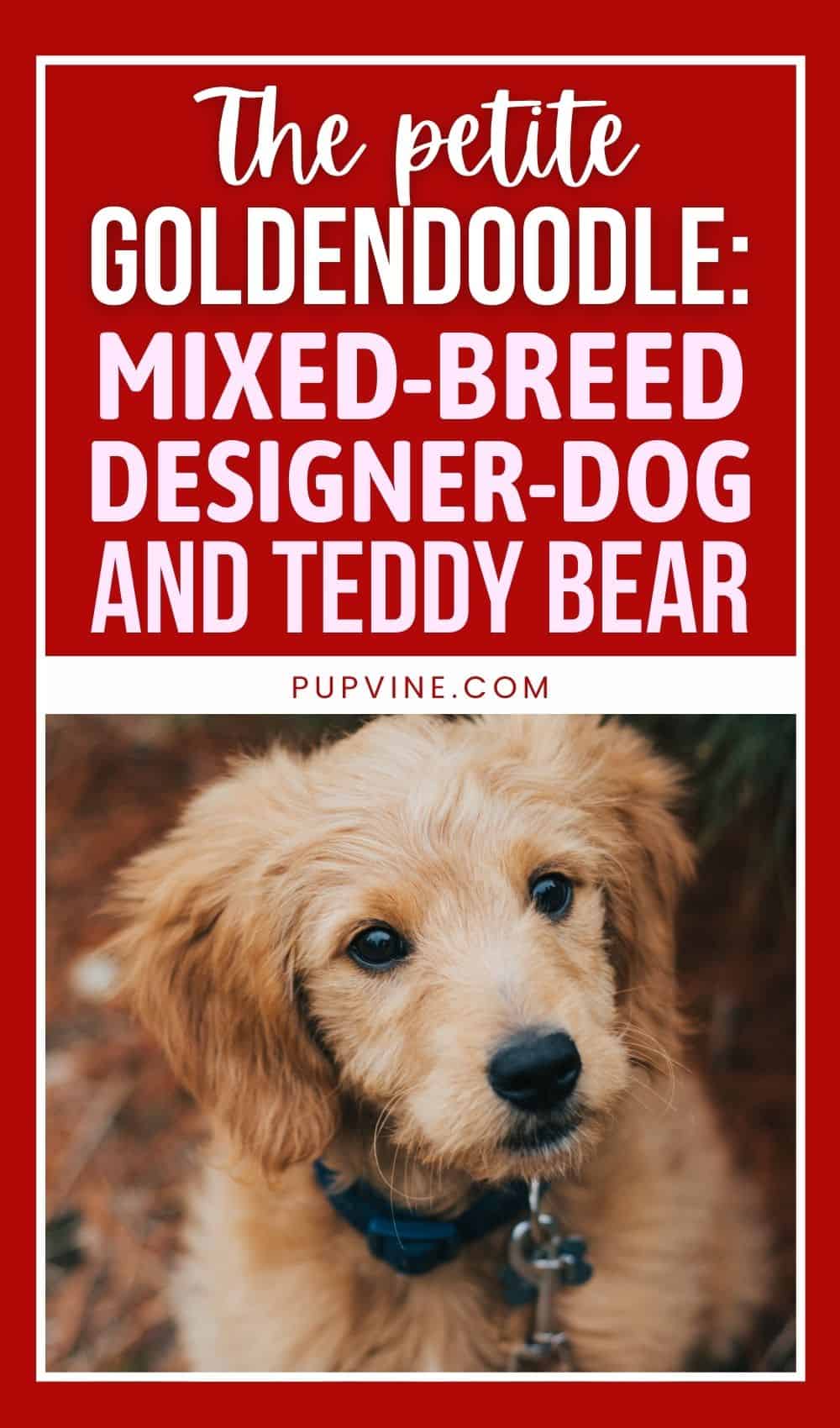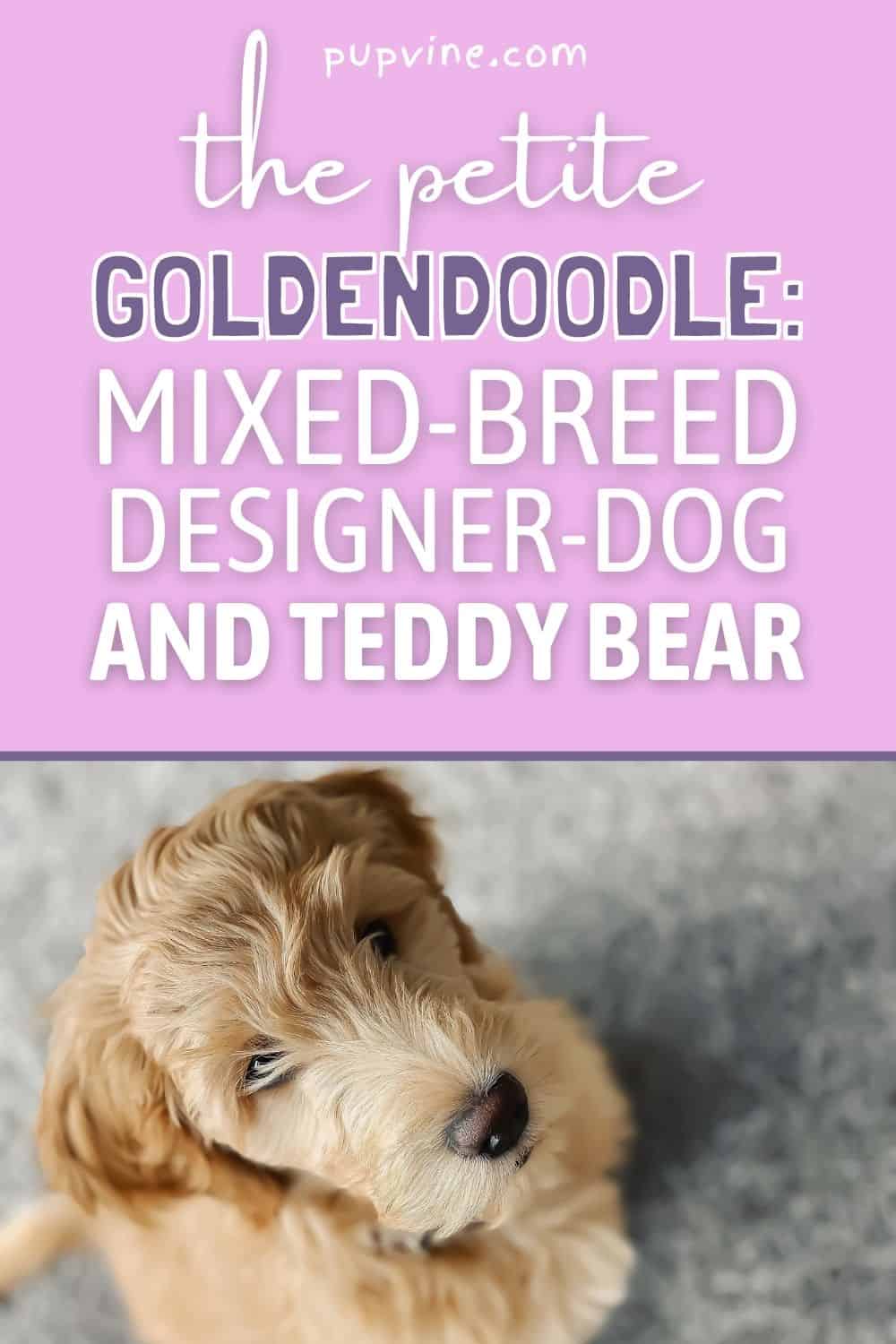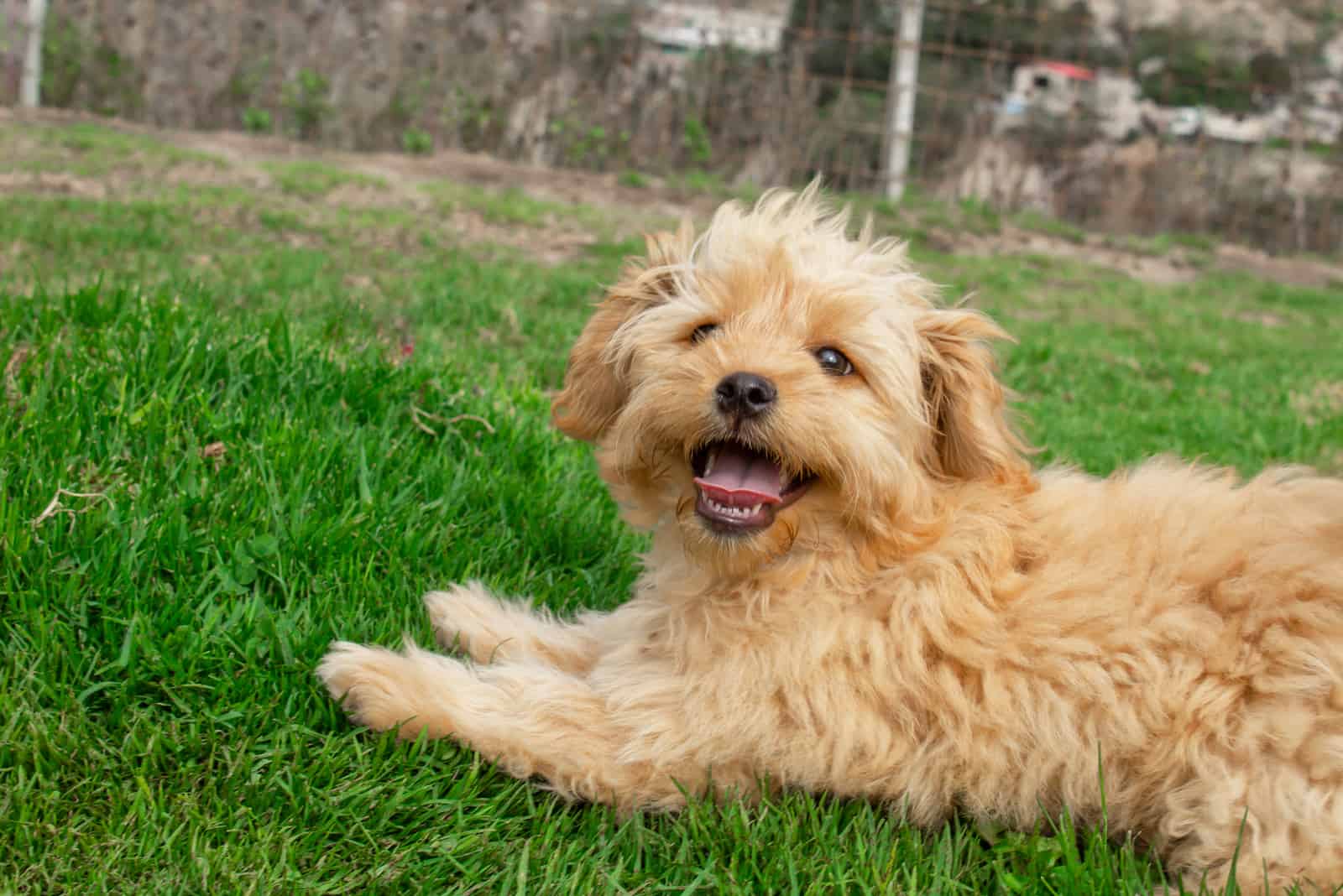What is it about dogs that we love so much? Their loyalty, the affection they shower on us, their playful antics? Those big eyes that melt our heart?
It’s all of these things and more, of course. They become a part of the family, and we adore them.
Each different breed possesses its own quirks and characteristics, and the petite Goldendoodle (also known as a toy Goldendoodle) is no exception.
Let’s take an in-depth look at this teddy-bear-like pooch to see just why it has become so popular as a family pet.
What’s In A Name?
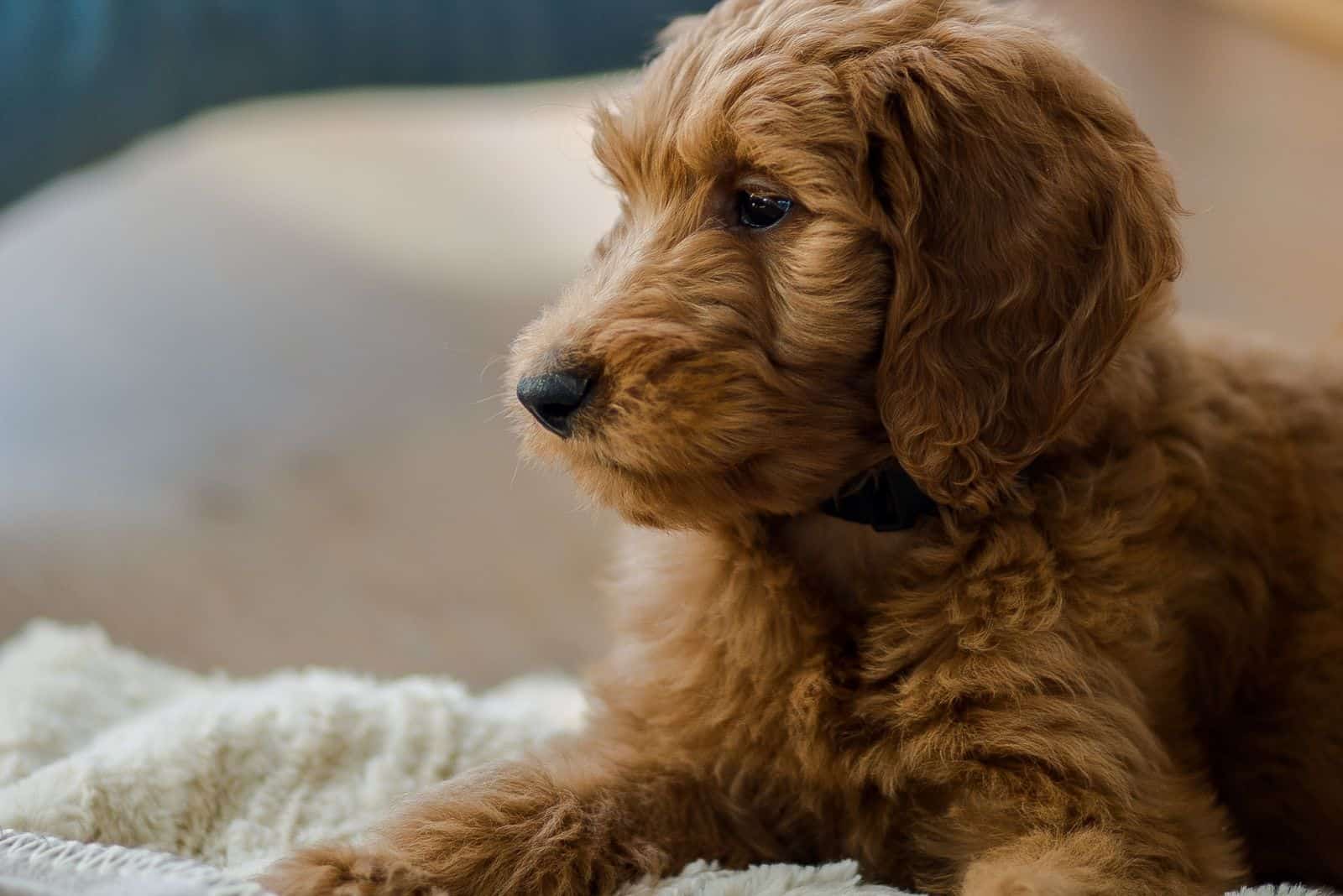
That name, Goldendoodle, just conjures up images of a warm, fluffy ball of loveable fun. But how did it come to be?
Taking inspiration from Wally Cochran, an Australian breeder who, in 1988, successfully crossed a labrador with a poodle to create the ever-popular Labradoodle, other breeders began to explore other combinations, taking the best traits of each breed and enhancing them.
As a dog breed, standard Goldendoodles are pretty new, with the first generation bred in North America in the early 1990s.
The miniature Goldendoodle version then made its appearance at the beginning of the new millennium, rapidly gaining in popularity.
The thinking behind the breed was to combine the energy and eagerness of a purebred golden retriever with the sweet nature of the American cocker spaniel and the hypoallergenic qualities and intelligence of the toy poodle or miniature poodle.
And this has resulted in a winning combination!
Although the cocker spaniel hasn’t earned a place in the name (petite golden cockerdoodle is a bit of a mouthful, after all!), it forms an essential part of the breed.
What’s So Good About Them?
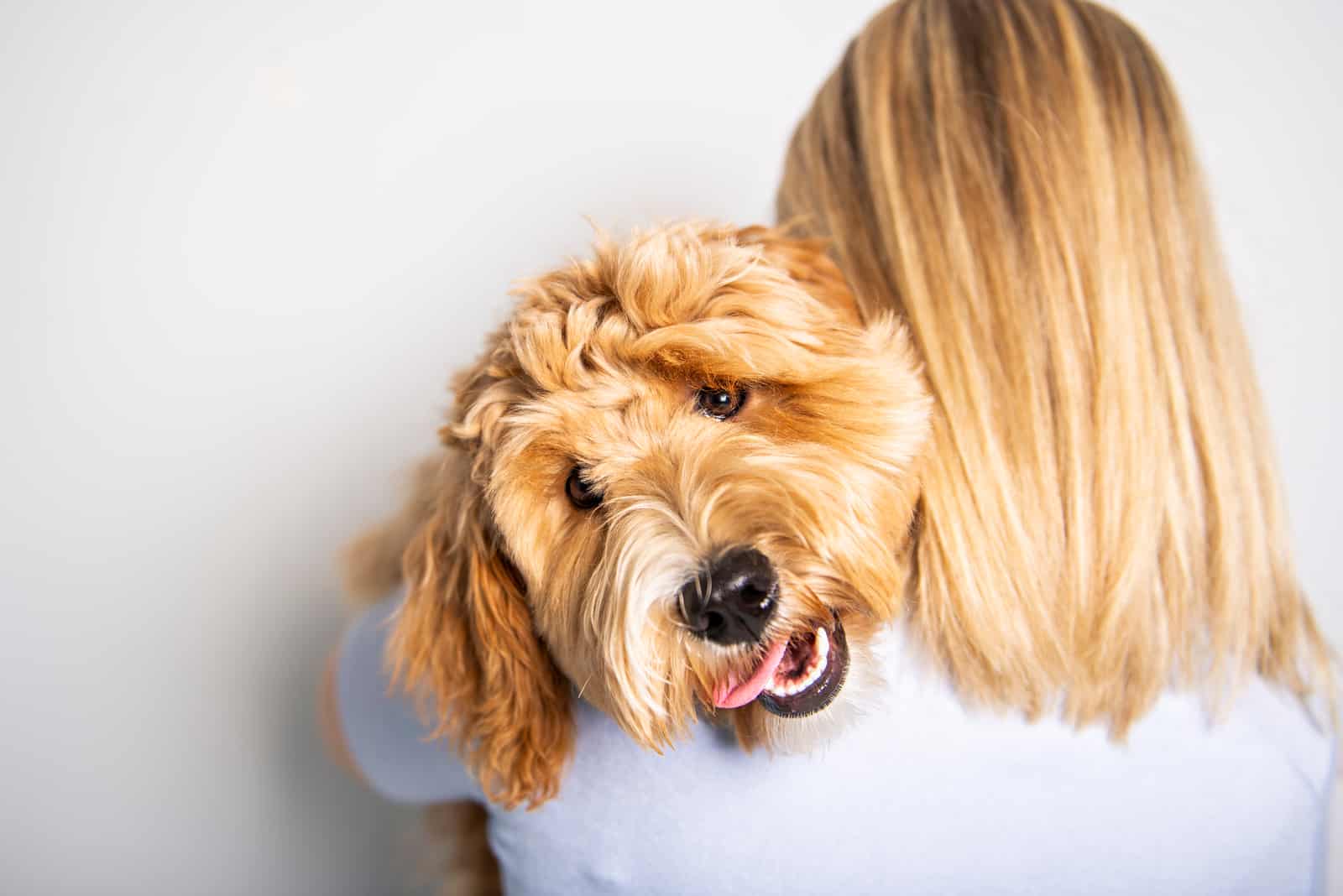
Let’s start with the fact that they can fit on your lap, which is great for those times when you just want to snuggle them! The health benefits of this action can’t be overstated.
The simple act of physical contact such as hugging stimulates hormones like oxytocin to be released, which eases anxiety and depression.
Aside from being good for our health (and the dog’s!), it’s just a lovely thing to do. And if anyone in your family suffers from allergies, then there’s more good news: their coat is unlikely to affect them too much.
This isn’t to say they are completely hypoallergenic, as no breed can claim this 100%, but the chances of a reaction are significantly reduced.
Are you a first-time dog owner? Then you might want to consider welcoming a beautiful, petite Goldendoodle puppy into your home!
They are gentle in nature while still being energetic and obedient, making them ideal for training. If you’re not used to dogs, then this breed will make your job a whole lot easier.
Some dog breeds can present a chore when it comes to grooming, shedding hair that seems to get everywhere, almost literally.
Petite Goldendoodles, however, are regarded as a non-shedding breed, and though that’s not strictly true (low-shedding is more accurate), they shouldn’t leave too many hairs around the place.
As for grooming, this will depend on how much of the parent dog’s genes your pup has inherited.
A little more Golden Retriever and their coat will need brushing more frequently, but if the poodle genes win out, the coat will be shorter and curlier, requiring less brushing.
This breed’s high level of intelligence, combined with a gentle and friendly nature, and that they are protective and loyal makes them very suitable for ‘service’ work.
They are often selected as companions for people with disabilities, serving as an invaluable companion to help and guide their owners safely through their daily lives.
Their special qualities make them ideal therapy dogs and companions for the elderly.
Unlike some breeds, they aren’t too sensitive to heat and cold, adapting to different climates pretty quickly.
Now we know a little more about their character, let’s see how to look after them.
Caring For Your Petite Goldendoodle
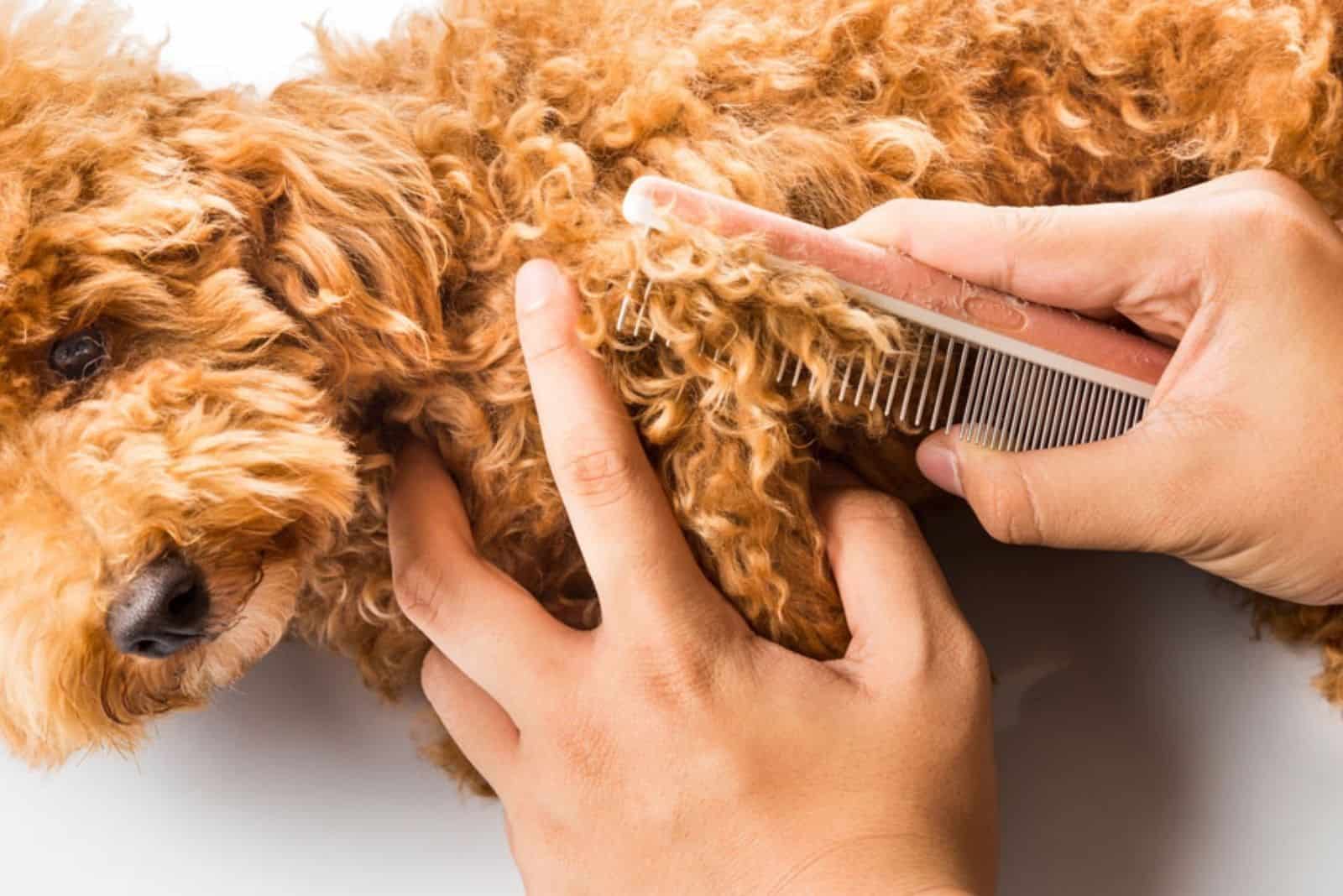
Although they don’t shed as much as some other breeds, you’ll need to keep their coat clean and healthy with fairly regular brushing.
As mentioned above, some will have curlier hair. Generally, their coats will be dense, fairly long, curly or wavy. Invest in a couple of brushes, one for brushing and one for de-matting.
Brushing twice a week will help the natural oils in the fur to be distributed across the coat, keeping it in good condition.
Those adorable ears will need careful checking once a week, just to make sure there’s no infection lurking.
Warm, moist ear canals can be an ideal place for bacteria and fungal spores to congregate. If you notice any bad odors or build-up of dirt or wax, give them a gentle wipe using a cotton ball and some canine ear solution.
In terms of exercise, you should plan to set aside between thirty minutes to an hour a day. They will adapt to your own pace very quickly, but they should be kept active and given plenty of exercise.
Because they are smaller dogs, the exercise is best taken in several short bursts throughout the day.
Petite Goldendoodles can easily adapt to a variety of living spaces and conditions. Their small size suits apartment or condo living, right up to the biggest homes.
They can cope in places with large yards, small yards, or none, provided they get to work off that energy during their walks and playtime in the park.
If this activity doesn’t wear down their toenails, then you’ll need to clip them to keep them short.
In fact, it’s a good idea to check their little claws regularly to see if they need clipping. Long nails can lead to problems with posture and walking, as the feet begin to splay, which stretches the tendons.
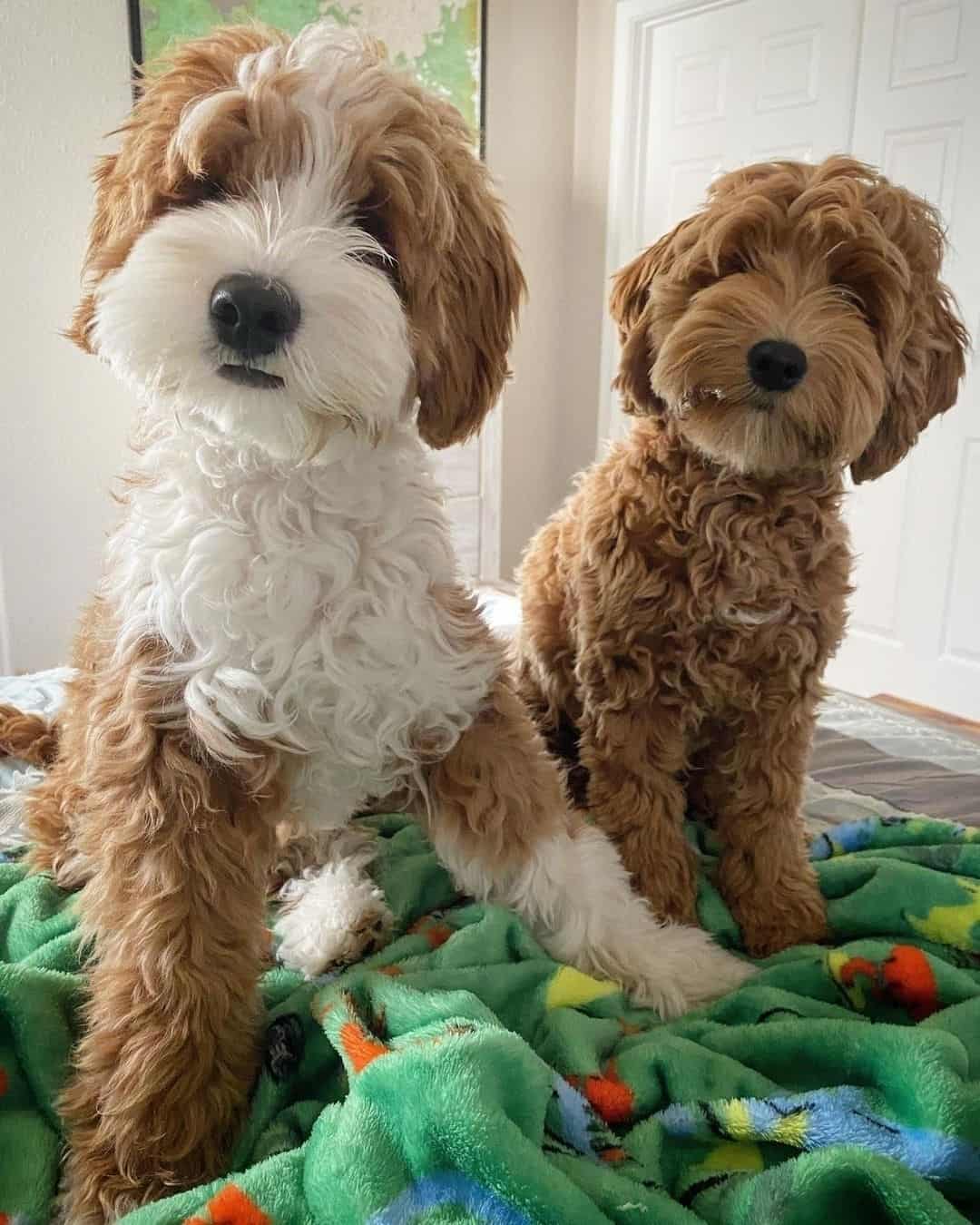
Photo from:@goldendoodle_kakuo
Equally important is mental stimulation. When not curled up and snoozing (on their bed, or on you!), they need to be kept occupied.
They are prone to separation anxiety, and though they are not particularly vocal, they will bark or whine if left alone for long periods.
Make sure they have something to entertain them, or you may return home to a scene of devastation!
Dental hygiene is important, too, with regular brushing or cleaning being vital to their health. Ideally, this should be done every day, but this isn’t always practical.
A chew, recommended by a veterinarian, can help to reduce the tartar from accumulating, but nothing comes close to a good brush with a toothbrush specifically designed for pooches.
Now we come to weight. The average size of an adult petite Goldendoodle, either male or female, weighs between 20 to 35 lbs.
Their diet should be in keeping with their activity levels and age and should only consist of high-quality food.
As with many dog breeds, their digestive systems are pretty sensitive. Avoid cheaper dog foods that are high in fats or stuffed with carbs and fillers, as these will not only upset their stomach but will also encourage them to eat more.
Variations On A Theme
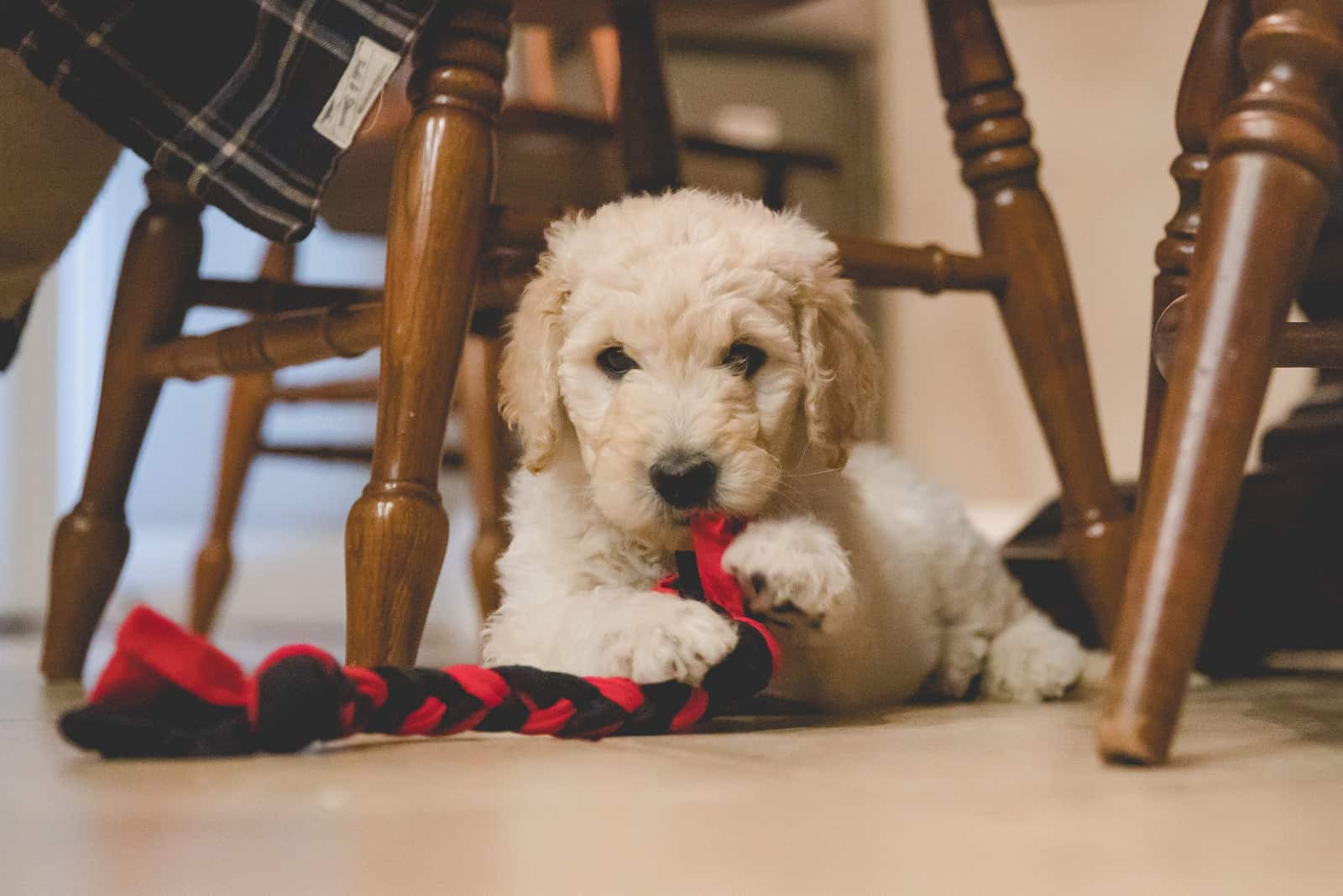
If you’re tempted to go ahead and find your perfect pooch, be certain you are picking the right one before taking the plunge! Miniature Goldendoodles come in three different sizes:
• Teacup — the smallest, at less than 13 lbs, and only 11 inches tall! Controversy surrounds this breed, though, as they are bred using the runts of the litter crossed with toy poodles, resulting in significant health problems and genetic defects.
• Petite/Toy — this is the one we are focusing on, with an average height of around 15 inches. Though larger than the teacup Goldendoodle, this breed is still easy to pick up and carry.
• Mini — without wishing to cause confusion, the mini Goldendoodle is classified as ‘any Goldendoodle under 30 lbs’. Most breeders, however, only use this term for dogs between 20 and 30 lbs with a height of 16 to 18 inches.
Are There Any Health Issues To Be Aware Of?
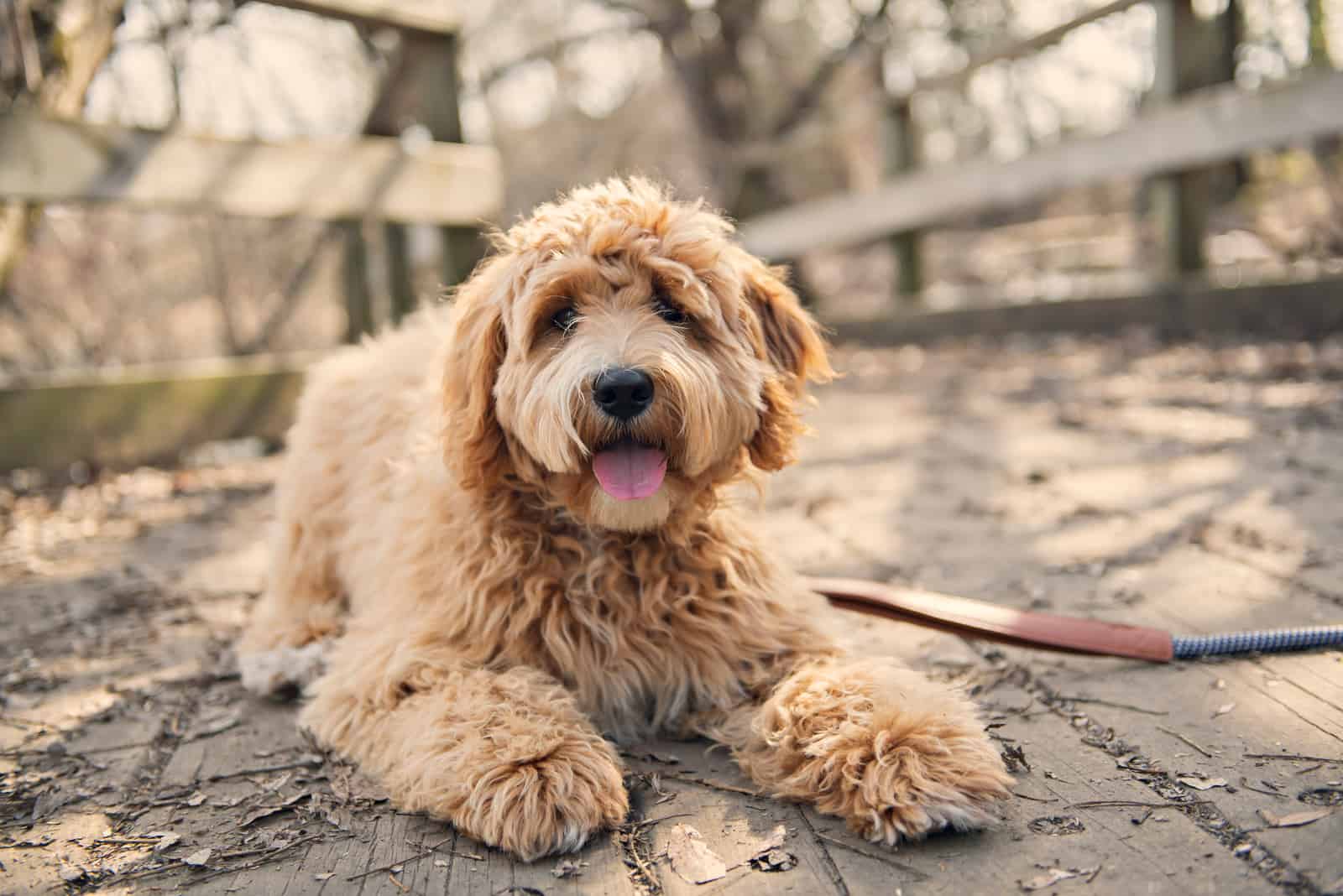
The average expected lifespan is between 10–15 years, but, as with any dog breed, there may be potential health concerns.
Although opinions differ, pure breeds are usually more likely to suffer from genetic disorders than mixed breeds.
However, some experts believe that because the parent breeds (in this case, golden retriever and poodle) both suffer from genetic maladies, then the resulting pups will inherit a ‘double dose’ of the problems.
Either way, it’s important to have them checked regularly and to buy them from a reputable breeder in the first place.
These will offer veterinary records (with a list of vaccinations and dates), genetic tests, a health guarantee, and a fair price.
We could make a huge list of potential diseases or conditions that you should be aware of, but many of these are low-risk, and it’s impossible to prepare for every eventuality.
What might be of use is some information on the conditions that could present a more serious problem.
• Von Willebrand’s disease — a lack of plasma protein that stops blood from clotting. Even minor cuts will bleed excessively as a result.
• Patellar luxation — temporary dislocation of the knee.
• Bloating — gas, fluid, or food fills the stomach, which is not only painful but also squeezes internal organs.
• Hypothyroidism — the thyroid doesn’t function properly, resulting in low hormone production.
• Retinal dysplasia — a degenerative condition of the retina, eventually resulting in blindness.
• Mitral valve dysplasia — a congenital heart disease that causes fatigue, shortness of breath, and an irregular heartbeat.
• Hip/elbow dysplasia — dislocation of the hip/elbow due to the joint or socket not being fully formed.
Although these issues are possible, they are by no means inevitable and can be, in most cases, managed or even overcome.
Book your dog in for regular health checks and never ignore any symptoms.
Now you have all the information you need to make that choice!
Whether it’s to be a family pet or a loyal companion for your ‘twilight years,’ a petite Goldendoodle is sure to bring joy, love, and a whole lot of smiles to your home.
